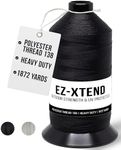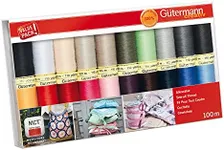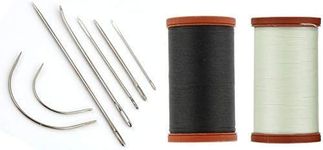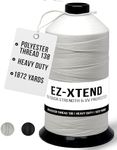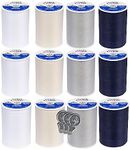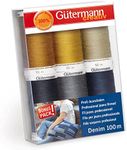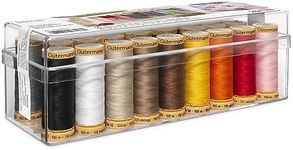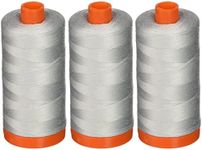We Use CookiesWe use cookies to enhance the security, performance,
functionality and for analytical and promotional activities. By continuing to browse this site you
are agreeing to our privacy policy
10 Best Sewing Thread 2025 in the United States
From leading brands and best sellers available on the web.How do we rank products for you?
Our technology thoroughly searches through the online shopping world, reviewing hundreds of sites. We then process and analyze this information, updating in real-time to bring you the latest top-rated products. This way, you always get the best and most current options available.

Most Popular Categories Right Now
FAQ
Buying Guide for the Best Sewing Thread
Choosing the right sewing thread is crucial for the success of your sewing projects. The thread you select can affect the durability, appearance, and overall quality of your finished product. To make an informed decision, you need to consider several key specifications. Understanding these specifications will help you pick the best thread for your specific needs, whether you're working on a delicate garment, a sturdy piece of upholstery, or anything in between.MaterialThe material of the sewing thread is important because it affects the thread's strength, elasticity, and suitability for different fabrics. Common materials include cotton, polyester, nylon, and silk. Cotton thread is soft and ideal for natural fabrics, but it may not be as strong as synthetic threads. Polyester thread is versatile, strong, and has some stretch, making it suitable for most fabrics. Nylon thread is very strong and elastic, perfect for heavy-duty sewing. Silk thread is luxurious and smooth, ideal for delicate fabrics and fine sewing. Choose the material based on the fabric you are working with and the desired durability of your project.
Thread WeightThread weight refers to the thickness of the thread, which can impact the appearance and strength of your stitches. It is usually indicated by a number, with lower numbers representing thicker threads and higher numbers representing thinner threads. For example, a 30-weight thread is thicker than a 50-weight thread. Thicker threads are suitable for heavy fabrics and visible topstitching, while thinner threads are better for lightweight fabrics and fine, detailed work. Consider the fabric weight and the type of stitching you plan to do when selecting the thread weight.
Thread FinishThe finish of the thread can affect its performance and appearance. Common finishes include mercerized, glazed, and bonded. Mercerized thread has been treated to increase its strength, luster, and dye absorption, making it a good choice for high-quality sewing. Glazed thread has a wax or resin coating that makes it smooth and reduces friction, ideal for hand sewing. Bonded thread has a coating that adds strength and reduces fraying, perfect for heavy-duty and outdoor projects. Choose the finish based on the type of sewing you are doing and the desired look of your stitches.
ColorThe color of the thread is important for the aesthetic of your project. You can choose a thread that matches the fabric for a seamless look or a contrasting color for decorative stitching. When matching thread to fabric, consider the fabric's color and pattern. If you can't find an exact match, opt for a slightly darker shade, as it will blend better than a lighter one. For decorative stitching, choose a color that complements or contrasts with the fabric to achieve the desired effect. Always test the thread color on a scrap piece of fabric before starting your project.
Thread PlyThread ply refers to the number of individual strands twisted together to make the thread. Common options include 2-ply and 3-ply threads. More plies generally mean a stronger and more durable thread. 2-ply threads are finer and suitable for lightweight fabrics and delicate sewing, while 3-ply threads are thicker and stronger, ideal for heavier fabrics and seams that need extra strength. Consider the fabric weight and the stress the seams will endure when choosing the thread ply.
